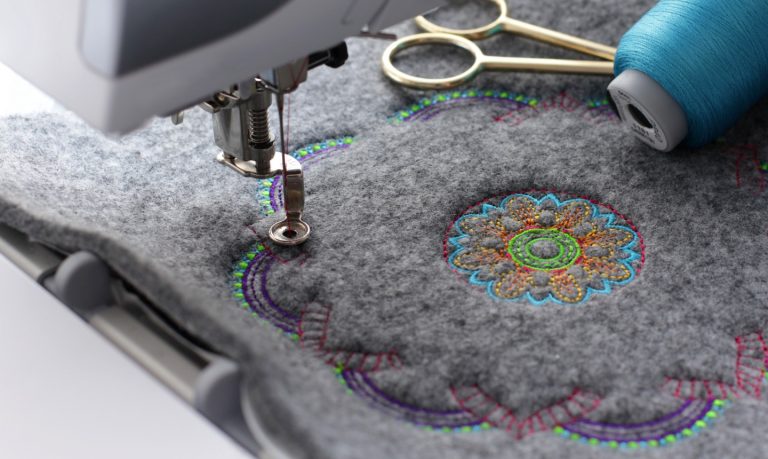Explore Different Types of Embroidery Digitizing Methods
Embroidery digitizing has actually developed considerably over the years, offering a myriad of techniques to bring designs to life in the digital realm. The realm prolongs to a lot more innovative strategies like photorealistic needlework digitizing and the remarkable world of 3D needlework digitizing.
Typical Hand Embroidery Digitizing
Standard hand embroidery digitizing includes the process of converting elaborate hand-stitched designs into digital layouts for device embroidery. This method needs knowledgeable craftsmens to diligently assess the handcrafted design and after that make use of specialized software to recreate it in a digital format. Each stitch, shade, and information needs to be meticulously translated to ensure that the significance of the initial hand needlework is preserved in the electronic version.
Among the essential difficulties of standard hand embroidery digitizing is catching the complexities and nuances of the handmade layout. Digitizing for Embroidery. Craftsmens have to have a deep understanding of various embroidery techniques, such as satin stitch, chain stitch, and French knots, to properly duplicate these methods in the electronic world. Furthermore, they require to have an eager eye for detail to ensure that the electronic layout maintains the exact same level of creativity and workmanship as the initial hand-stitched piece
Punching Strategy
To flawlessly shift from traditional hand embroidery digitizing to the punching strategy, artisans have to now concentrate on transforming the complex digital styles into directions that embroidery makers can interpret. The boxing technique involves making use of specialized software application to produce electronic data which contain commands for the embroidery device to adhere to. This procedure needs a deep understanding of not simply the layout itself but also the capabilities and limitations of the embroidery device.

Auto-Digitizing Software Application Programs
Needlework digitizing has actually been transformed by the development of auto-digitizing software application, providing artisans with advanced devices to convert digital designs into needlework maker directions successfully. Auto-digitizing software application utilize formulas to examine electronic pictures or vector data and create needlework designs immediately. These programs permit quick and accurate conversion of web link elaborate layouts right into stitch patterns, conserving effort and time for embroiderers.
Among the vital benefits of auto-digitizing software program is its straightforward user interface, making it available to both novices and skilled digitizers. These programs typically consist of features such as stitch editing and enhancing tools, thread shade matching, and the ability to sneak peek the final embroidered layout. Additionally, auto-digitizing software application can deal with complex designs with several shades and detailed information, producing premium needlework data appropriate for various garments and textile jobs.
While auto-digitizing software uses convenience and effectiveness, it is essential for users to recognize the limitations of automated digitizing. Fine-tuning and manual modifications might still be required to achieve the desired needlework top quality, particularly when dealing with complex or one-of-a-kind designs. By leveraging the capabilities of auto-digitizing software together with manual digitizing strategies, artisans can boost their embroidery digitizing procedure and produce sensational stitched items.
Photorealistic Needlework Digitizing
Using innovative electronic imaging strategies, attaining photorealistic outcomes in needlework digitizing has come to be a popular skill their explanation among modern craftsmens. This method includes converting high-resolution photos right into elaborate stitch patterns that very closely resemble the original style, resulting in embroidery pieces that exhibit natural detail and deepness.
To achieve photorealistic needlework digitizing, craftsmens need to possess a keen eye for detail and an extensive understanding of how various stitch types and thickness can influence the last end result. By thoroughly drawing up each shade and color in the image, embroiderers can create a digital data that overviews the embroidery maker to reproduce the nuances of the original picture precisely.
Photorealistic embroidery digitizing is especially preferred in creating custom-made layouts for clothing, home design, and art pieces why not check here where recording the essence of a photograph or art work is critical. This method permits artisans to change memories, landscapes, pictures, and intricate art work into sensational embroidered masterpieces that display a mix of traditional workmanship and cutting-edge modern technology.
3D Needlework Digitizing
With the development of digital imaging techniques in achieving photorealistic lead to needlework digitizing, the exploration of 'D Embroidery Digitizing' provides a brand-new dimension to the complexities of style replication. 'D Embroidery Digitizing' describes the three-dimensional digitizing method that includes deepness and appearance to needlework styles, creating an extra sensible and visually appealing end product. This technique uses software program that mimics the effect of light and darkness on the embroidery design, boosting its overall aesthetic effect.
One of the crucial benefits of 'D Needlework Digitizing' is its capability to make designs look even more lifelike and dynamic. By adding deepness to the embroidery design, the end product shows up more realistic and fascinating (Digitizing for Embroidery). Additionally, this strategy permits even more innovative liberty in style execution, making it possible for embroiderers to trying out different structures and impacts that were formerly challenging to accomplish
Final Thought

Comments on “Best Digitizing for Embroidery: Boost Your Jobs”